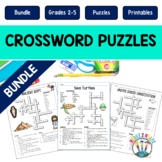147 results
Physics lectures for Microsoft Word
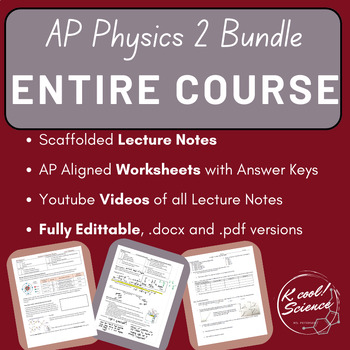
Entire AP Physics 2 Curriculum- Notes, Practices, and Video Lectures!
This bundle includes:Scaffolded Lecture Notes- designed to have space to write and annotate as the teacher lectures, writing along with the students as they go. These are developed from the Course and Exam Description, the Cutnell-Johnson textbook, AP Physics 2 prep books, Bigler Notes, and more to teach the content in a concise, straightforward, and effective manner.Practice Worksheets + KEYs- For each lecture, a matching practice where students extend and practice their skills in both AP level
Subjects:
Grades:
10th - 12th
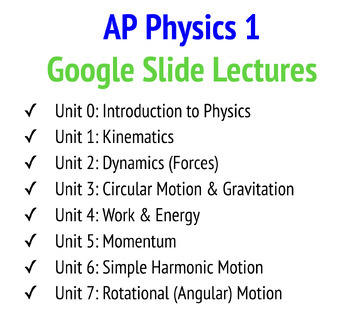

Concept Compare: Kepler's (and Newton's) Laws of Planetary Motion for Orbits
This concept comparison is between: Kepler's Laws of Planetary Motion, and how they relate to Newton's Laws of Motion and the Law of Universal Gravitation. Bring a calculator!The Concept Comparison Routine is used help compare and contrast key concepts. Specifically, students use like and unlike characteristics and categories shared and not shared by two or more concepts to better understand the overall concept. Students taught using the Content Enhancement routines earned higher total test scor
Subjects:
Grades:
7th - 12th, Higher Education
NGSS:
HS-ESS1-4
Also included in: StayGiant Earth Science Bundle: Astronomy (space exploration)

Concept Compare: Why Does the Sun Shine? Thermonuclear Fusion! (p-p and CNO)
This Concept Comparison of Thermonuclear Fusion contrasts proton-proton (p-p) chain reactions, and the "cold" carbon-nitrogen-oxygen (CNO) cycles. Help Ss communicate scientific ideas about the way stars produce elements over their life cycle. Emphasis is on the way nucleosynthesis, and therefore the different elements created, varies as a function of the mass of a star and the stage of its lifetime. As cosmologist Carl Sagan famously said, “We are made of star stuff.” And we literally are! We a
Subjects:
Grades:
8th - 12th, Higher Education
NGSS:
HS-PS1-8
, HS-ESS1-3
, HS-ESS1-1
Also included in: StayGiant Earth Science Bundle: Astronomy (space exploration)

StayGiant Physics Bundle: Electricity
Electric Charge, Electric Force, and DC CircuitsSs begin an exploration of electricity by learning about the electric force and the properties and interactions of electric charges. Ss continue by examining electric circuits and the interactions between current, resistance, and voltage.Topics include:Conservation of chargeElectric chargeElectric forceDefinition of a circuitResistivityOhm’s law, Kirchhoff’s loop rule (resistors in series and parallel)Kirchhoff’s junction rule, Ohm’s law (resistors
Subjects:
Grades:
8th - 12th, Higher Education
NGSS:
MS-PS3-2
, HS-PS3-1
, HS-PS3-5
, 4-PS3-2
, HS-PS3-3
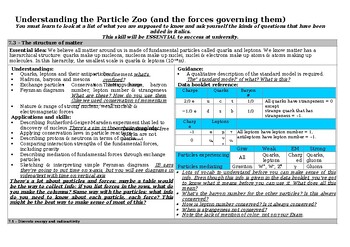
Particles, Forces, and Feynman diagrams: IB Physics Lecture Notes & more (A4)
IDENTICAL TO RESOURCE WITH THE SAME NAME-- BUT WITH A4 MARGINS. Let me know (in a review? ask me a question?) whether I should offer resources formatted for A4 paper instead of converting them to fit 8 1/2 x11 paper.Used with IB Physics students working through the 2016 syllabus:4 page handout with information on the zoo of nuclear particles4 pages with description of how virtual particles come to exist and images of their tracks4 pages about antimatter10 pages of (silly) cartoons about particl

Relativity-bundle
This bundle includesa unit introduction and overview, especially a 2 page handout summarizing the ideas of special and general relativity and their logical consequences (38 pages)a lesson for teaching relativistic momentum (essential to all working particle accelerators) (22 pages)a lesson for teaching the two ideas of special relativity that are going to have all the logical (but hard to accept) consequences (37 pages)a lesson for teaching why observers in relative motion and in different locat
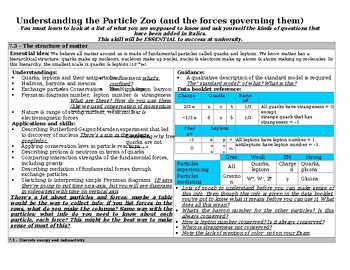
Particles, Forces, and Feynman diagrams: IB Physics Lecture Notes & more
Used with IB Physics students working through the 2016 syllabus:4 page handout with information on the zoo of nuclear particles4 pages with description of how virtual particles come to exist and images of their tracks4 pages about antimatter10 pages of (silly) cartoons about particles to lighten the mood in this unit about so much beyond student's experience3 page handout with information on the four fundamental forces1 page to help explain why the forces have such different ranges1 page to show

Atomic Theory Unit Notes Bundle
In this bundle you will find four PowerPoint presentations & two accompanying handouts, teaching students about atomic structure and theory. This notes bundle will go into detail concerning Dalton's atomic theory, our understanding of isotopes, the work of J.J. Thomson, William Thomson, Ernest Rutherford, Niels Bohr and the contributors to the Wave Mechanical Model, in addition to an explanation of how to write ground, excited and valence electron configurations and representing electron co
Subjects:
Grades:
9th - 12th, Higher Education
NGSS:
HS-PS1-1
, HS-PS4-1
, HS-PS1-2
, HS-PS4-3
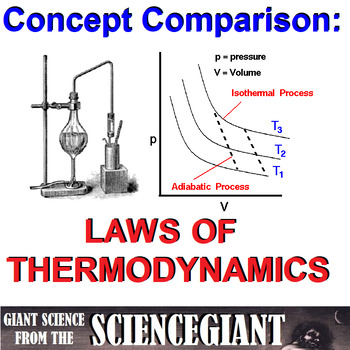
Concept Comparison Frame: Laws of Thermodynamics
What are Laws of Thermodynamics? This concept comparison introduces Ss to the laws of the thermodynamics, pressure-volume diagrams for ideal gases, processes which are isothermal, isovolumetic, and adiabatic, and explains differences in enthropy and enthalpy. Through inquiry and exploration, students will describe how the law of conservation of energy dictates how heat energy is transferred through systems by convection, conduction, and radiation, its influences on changes of states of matter an
Subjects:
Grades:
9th - 12th, Higher Education
Types:
NGSS:
MS-PS3-4
, HS-PS3-4
, HS-PS3-2
, MS-PS3-3
Also included in: StayGiant Physics Bundle: Thermal Energy
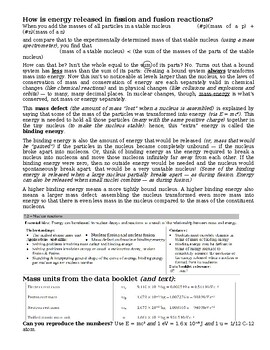
Binding Energy and Mass Defect: IB Physics Lecture Notes and more
The notes on p. 1-4 explain mass defect and binding energy (including how to calculate both, how to interpret binding energy curves, and sources of data -URLs valid as of 1/3/24) as needed in the IB Physics (2016) syllabus.P. 5-8 are annotated notes with solutions.Notes from textbooks and their sample calculations are on p.9-13.More on binding energy curves on p.14-16.Various other relevant material is on p.17-23.P. 24-25 are homework problems (with answers but not solutions, sorry).
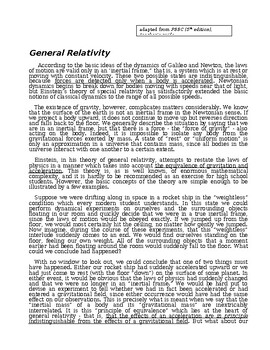
Relativity-part 6-General relativity
This resource focuses on Idea 3, the foundation of general relativity, and its Logical Consequence 10 (see free resource "Relativity-unit overview and intro"):student handouts (plus annotated version) to explain the conceptsteacher notes, props, and more suggestions for teaching the concepts copy of 1908 letter from Einstein while he was working on the implications of non-inertial reference frames for gravity and of 1913 letter about the Sun bending starlighthandout (plus annotated version) on c
Subjects:
Grades:
11th - 12th
Also included in: Relativity-bundle

Relativity-part 5-time dilation and the Twin Paradox
This resource focuses on Logical Consequence 9 as a direct result of Ideas 1&2, the foundation of special relativity (see free resource "Relativity-unit overview and intro"):student handout with a conceptual version of the twin paradoxteacher notes and props for teaching the concepts student handout (plus annotated version) with a mathematical version of the twin paradoxanother explanation of time dilationseveral pages about confirmations and what "time" really iscartoons about time dilation
Subjects:
Grades:
11th - 12th
Also included in: Relativity-bundle
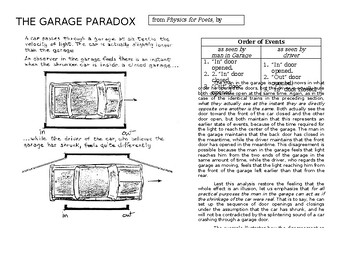
Relativity-part 4-length contraction and the Garage Paradox
This resource focuses on Logical Consequences 7&8 as a direct result of Ideas 1&2, the foundation of special relativity (see free resource "Relativity-unit overview and intro"):student handout (plus annotated version) to set up observers in a relativistic car and on the ground and their inability to agree about measurements of space and timeteacher notes and props for teaching the conceptsexamples using the math 3 other explanations of the conceptsre-visit (see "Relativity-part 1-relativ
Subjects:
Grades:
11th - 12th
Also included in: Relativity-bundle
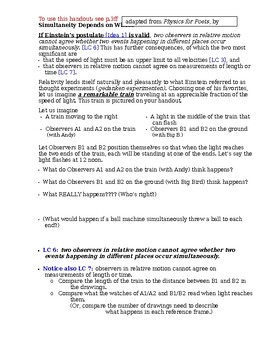
Relativity-part 3-simultaneity and the Train Paradox
This resource focuses on Logical Consequences 6&7 as a direct result of Ideas 1&2, the foundation of special relativity (see free resource "Relativity-unit overview and intro"):student handouts (plus annotated versions) to set up observers on a relativistic train and on the ground and their inability to agree about measurements of space and timeteacher notes and props for teaching the concepts 3 other explanations of the concepts
Subjects:
Grades:
11th - 12th
Also included in: Relativity-bundle

Relativity-part 2-reference frames and the speed of light
This resource focuses on Ideas 1&2, the foundation of special relativity, and their Logical Consequences 4&5 (see free resource "Relativity-unit overview and intro"):teacher notes and props for teaching the concepts info useful for relative motion, the classroom reference frame, and how c is measuredstudent handout and key for deriving differences in time expected (but not found!) for Michelson-Morleycomplete derivations of the math behind the problem of simultaneity that result in probl
Subjects:
Grades:
11th - 12th
Also included in: Relativity-bundle
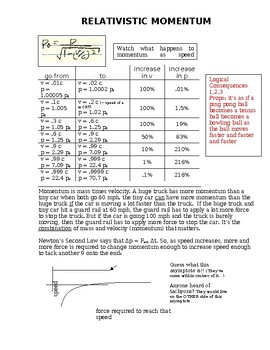
Relativity-part 1-relativistic momentum
This resource follows the start of the unit and refers to Ideas 1&2, the foundation of special relativity, and their Logical Consequences 1,2,&3 (see free resource "Relativity-unit overview and intro"):student handouts (plus annotated versions) that summarize the conceptsnotes for teaching about relativistic momentumstudent handout (plus annotated version) that previews coming conceptsarticle about Einstein and relativistic mass
Subjects:
Grades:
11th - 12th
Also included in: Relativity-bundle
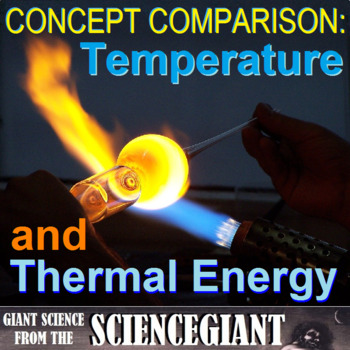
Concept Comparison: Temperature vs Thermal Energy
This Concept Comparison contrasts thermal energy and temperature as they relate to heat transfer. It builds from middle school science concepts of mechanical energy, and an introduces specific heat capacity and the laws of thermodynamics.The Concept Comparison Routine is used help compare and contrast key concepts. Specifically, students use like and unlike characteristics and categories shared and not shared by two or more concepts to better understand the overall concept. Students taught using
Subjects:
Grades:
7th - 12th, Higher Education
NGSS:
HS-PS1-4
, MS-PS1-4
, HS-PS1-5
, MS-PS1-6
Also included in: StayGiant Physics Bundle: Thermal Energy
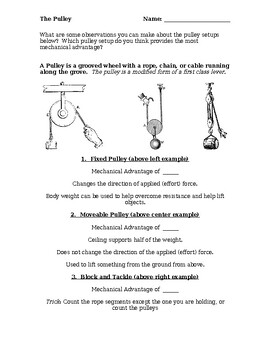
Physics: The Pulley Guided Student Notes (Fixed, Moveable, Block & Tackle)
This MS-Word handout helps guide a lesson on pulleys as part of a physics simple machine unit or Rube Goldberg project. Two levels of guided student notes are provided, the first for limited note taking for special needs students, and the second for typical students who can take full lesson notes. Since this is a word document, you can modify the level of detail you want students to take or fill-in. This is a great handout to use as a lesson exit ticket. The entire handout is can be previewe
Subjects:
Grades:
7th - 10th
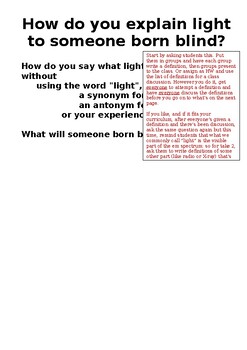
So, what IS light?
This resource starts with asking students to define "light" in a way someone born blind can understand.The resource includes:the person born blind activity (with suggestions of how to use the definitions in class discussions)suggestions for demos/examples of the behavior in their operational definitionsa handout that reprises the initial question and summarizes observations of light that can be explained by the particle and wave models, culminating in the need for quantum explanations that expla
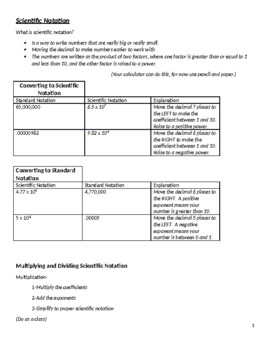
Physics and Chemistry: Math Review
This 14-page resource contains instructions, examples, and sample problems for scientific notation, significant figures, and dimensional analysis. (A 14-page key is also provided for this resource.)I have found that reviewing these topics at the beginning of the school year helps ensure that all of my students have the needed math skills to be successful in physics and chemistry.I have made this resource all inclusive. The instructions are followed by examples to go over as a class. There are
Subjects:
Grades:
9th - 12th
Types:
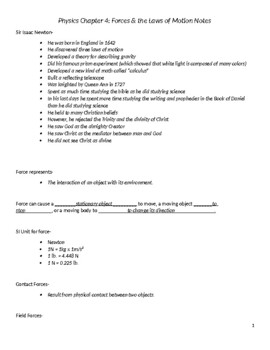
Physics Guided Notes- Force, Friction, and Newtons Laws
These guided notes are a great way to discuss force, friction, and Newtons Laws. I have embedded examples and practice problems throughout. I have also included lab ideas where they are applicable. These notes are based on the textbook "Holt Physics". An answer key is provided, so the use of a textbook is not necessary.I use these guided notes to replace boring lectures. They turn covering new material into more of a discussion than a one-way conversation.Topics covered include--Sir Isaac New
Subjects:
Grades:
9th - 12th
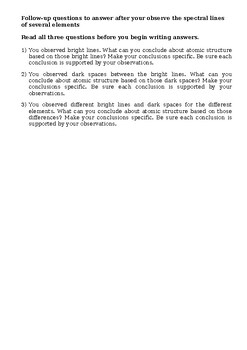
Atomic spectra: Questions, Activities, Diagrams
This resouce is most useful after students see the spectral lines of several elements. Included:spectral lines lab, color charts, teacher notes, and keyquestions to help them connect what they saw to atomic structure (answers included)links to photos and simulations about atomic spectraa class demo that uses money and students physically moving up and down in the classroom to model electrons absorbing and emitting only specific energiesmany diagrams that explain emission and absorption spectra (
Subjects:
Grades:
10th - 12th
Types:
Also included in: Quantum Atoms and Atomic Structure-bundle

Question Exploration and Concept Compare Frame: The Ear and Hearing
Listen up! This question exploration helps Ss answer How do you hear? It explains the physics of the sense of hearing, ear anatomy and acoustics for physical science students. This product also includes a concept comparison frame of the decibel scale, two classroom activities to try with students. First is a Line-Up, to get students out of their seats and review the main idea answer by making a human model of the outer and inner ear. The second activity is a fill-in-the-blank worksheet on ear an
Grades:
8th - 12th, Adult Education
NGSS:
MS-PS4-1
, MS-PS4-2
, HS-PS4-1
Also included in: StayGiant Physics Bundle: Waves and Sound
Showing 1-24 of 147 results



